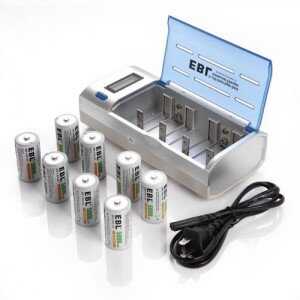
Be careful when you buy rechargeables. These 10,000 mah D batteries and charger go for less on Ebay with a charger than the same number of them go for on Amazon without. Energizer D batteries are only 3,500mah.
First off, I wouldn’t expect many people to click on this article because who the heck doesn’t know what a rechargeable battery is. So for that reason I added to the title “Where There’s Smoke…,” implying that there is fire somewhere. I am not referring to literal fire, though some rechargeables have been known to cause them. What I mean by that is where you see a name brand on a rechargeable battery, be careful to not pay too much for the name, instead of getting the most milliamps-hours for your buck.
And, besides anything you might learn from this article (which I hope is something), how many of us have enough rechargeable batteries should the collapse happen today? Hopefully we also a solar battery charger, which I’ll get to as well.
What is a milliamp-hour, usually labelled as mah, like 3000mah? A milliamp is a thousandth of an amp, and if you have followed our solar articles in this series, you’ll already know that amps can be confusing, because they are rated at a given voltage, so they can seem like a lot of power when in fact they are not. I’m not going to get into the math yet again, but apples to apples, always check what the mah rating is on whichever brand of battery you decide to buy.
If you want to know your draw rate on a given radio or appliance, check out the adapter. If the radio takes 6 AA batteries, it is most likely running at 9 volts, and the adapter will be a 9 volt adapter. If the adapter says 800mah, you know that your radio is running at this rate, so if you put 6 AA batteries in it that are are rated at 800mah (which would be a pretty butch radio), you’ll get one hour out of it. When batteries are run in series, to increase their voltage (each AA battery is 1.2-1.5 volts), the capacities average. They don’t add up.
I used the 3000mah number above because if you look around, it is tough to find an AA rechargeable higher than that. Regular Energizer AA batteries that come with a charger at Walmart are 1300mah. It isn’t that Energizer doesn’t make a more substantive battery. I found what is actually a pretty good deal on 2400mah Energizers on Amazon just now in fact. It just seems that ignorance is the order of the day with rechargeables, and you have to be careful with your numbers. Before I began this research I bought some Tenergy 9v batteries from Amazon, and it turns out that I could have gotten more than twice the mahs for the same price or less on Ebay.
So lets get into Ebay for rechargeable batteries, where, as you may already know, I have found the majority of my prepping needs (and no they don’t advertise here). When it comes to rechargeables, it seems as though there are large wholesale distributors using Ebay to sell bulk to retailers here in the US, and you can get very high mah batteries for as cheap or cheaper than store bought batteries with half the capacity. For instance, this ad for 48 3,000mah AAs for $23.99 is ridiculously cheap.
C, D, and 9v batteries seem to go for a lot more than the AA and AAA, because for C and D they are much more power, 5,800 and 10,000mah hours respectively for the , and for 9v batteries it is because they are actually made up of 6 smaller cells and they are expensive to make. Beware that with 9v batteries there are ranges from 250mah all the way up to 900mah. I found that these 600mah lots are a good buy compared to the other sizes, considering I got taken on Amazon for the 250mah. The rechargeable Energizer 9v batteries are only 175mah ouch.

9v batteries have an even wider gap between the power capacities. These 600mah go for a few bucks each with chargers on Ebay.
Chargers
A lot of these sellers will bundle a charger in with their batteries, and obviously you should make sure that you have a charger for all of your sizes. AAA, AA, C and D batteries are all the same voltage. There are large 6 volt rechargeable flashlight batteries, and obviously 9v batteries need their own charger. Chargers add only about $5 to the cost of bulk battery deals.
The question is whether or not you should invest in a separate solar charger. I vote yes, because otherwise you will be a slave to your power inverter if you plan to charge your batteries from a solar or wind system. Please see our solar articles if you don’t know what this means.
To charge AAA – D batteries 4 at a time, I found this guy who sells a 160mah solar charger for $39.99, and he also has deals on up to 20 of them. I also found a nifty charger that has a voltage switch from 3v to 12 volts, but you would have to get some battery boxes, like this one that holds 8 D batteries. You could of course also charge 8 of the 1.2 volt batteries in series from a standard solar panel voltage controller. Theoretically you could also series together to 9v batteries to an 18v panel as well, but I wouldn’t do it without a controller.

This solar charger on Ebay is $40 and they have deals on multiples. It charges 4 batteries of the 1.2v sizes.
Can I recharge any Lithium battery? NiCAD?
The short answer to this is yes, you can, but you won’t get the full rated power back out of it, and it will probably only last a few times. There is a subtle difference between lithium ion batteries, which are the standard rechargeables, and regular lithium batteries, which are disposable. I include this point because I think there is a misconception out there that lithium is lithium.
All NiCAD batteries are rechargeable, but you’ll find that in the small battery sizes NiCADs hardly even exist anymore, and they have way less capacity than lithium ion.

Batteries for your specialty flashlights in CR123A, and even these button cell 2032s come in lithium ion, but they need their own chargers.
Don’t Forget Your SureFire!
If you have flashlights or optics that take the CR123A size 3.7v battery, orA the larger 3.7v battery, you need to get some of those as well, and a separate charger. The good news is that they exist on Ebay as well. It looks like 2300mah is the larger capacity size, and the batteries are a couple bucks each.
I also found that you can get button cell 2032 batteries in lithium ion with a charger, so all of my optics will have fresh batteries.
Don’t Drain Your Batteries!
From what my research shows, it is best to not drain your rechargeables down to less than half power before recharging them. I guess that is true for all batteries, so in a survival situation it is probably a good idea to figure out the drain of all battery appliances in advance, and keep records of the battery drain. Most battery driven things are more for convenience than necessity, but it would stink if you realize that you killed your flashlight batteries after a couple uses. And for this column I try to assume that most people are on a budget, so if your only investment is 4 batteries and a solar charger for your survival radio, don’t buy the Energizers, and make sure you recharge your batteries every day during daylight hours. Rechargeable batteries are fallable like everything else, so you might want to get two sets, and two chargers.
Some of the commenters on this article have brought up an interesting point about the “self discharge rate.” This is a new marketing term in the battery industry because people have noticed that (regular alkaline) Duracells, while they don’t last as long as Energizers, tend to keep their charge longer when you leave them sit. In any battery there is a tradeoff between storeage capacity and the ability to hold a charge for a long time, so regardless of which batteries you buy, it is a good idea to set up calender reminders to top of your batteries. If you use an Android phone, Google calendar is great for that because it sends you an email and gives you a notification, and even if you aren’t on Android, it’ll still email you. I also try to put away a little more storeable food every year, just in case my storage conditions aren’t as good as I hope they are. To some degree this advice is like the talking heads on TV telling you to check your generator and buy some bottled water before a blizzard, but it doesn’t hurt to mention it.
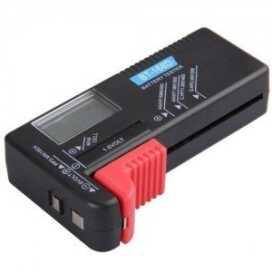
I would also invest in a battery tester. They are cheap when you buy them directly from China. You shouldn’t buy any of these things at Walmart, because you’ll get a quarter of the value.
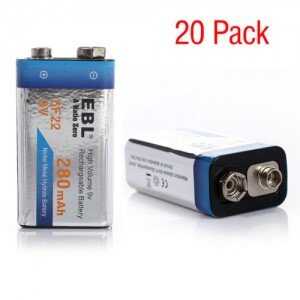
But beware of mah numbers. For instance, these 9v batteries are only 280mah, and they look just like the same seller’s 600mah.

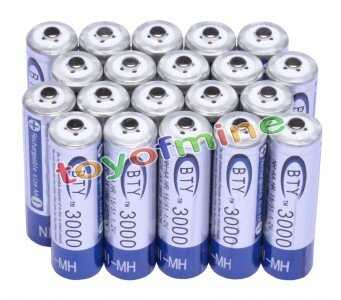
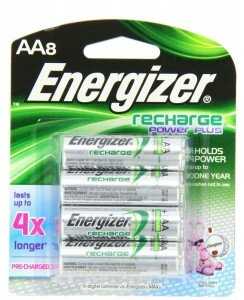


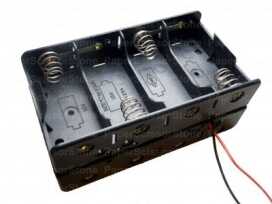
I got complete details about the batteries from this article. I also use a 3000 mah rechargeable battery and the usage details mentioned are correct. Great article, keep posting !!!!
Interesting article! I used to drain my rechargeable battery down to less than half power before recharging them. And it harmed my battery so much. Then my brother told me to stop that habit. It seemed to better for my battery.
What I see missing in this discussion are the other kinds of rechargeable batteries that are usually usable in the same items as regular batteries, flashlights, radios etc. 26650, 18650, 18350, 14500 etc. These batteries are commonly used in e-cig or vaping devices. This industry is huge and uses all rechargeable and is where, IMO, you will find the best info about battery configs and recharging technology. I urge you to check in to it on vaping forums. Theres a lot of day to day use and experimenting with these batteries, hence, actual experience, not label reading. http://www.e-cigarette-forum.com is the only one Ill put here because I dont think they sell anything. The more you know…
Some good tips in here.. I would just check on your sources for only letting batteries drain half way.. I’m a computer engineer and from my experience letting Li-Ion batteries drain completely once a week keeps my devices battery life running like new. Last comment is about the google calendar thing. If there’s a collapse or zombie apocalypse, email probably won’t be in the best functioning order due to communications blackouts. So I would say to write those numbers down in a notebook or something. Cheers
As for the Harbor Freight 45W Solar Kit and the battery-box shown above, there are hundreds of more uses found at the DIY Harbor Freight Solar Kit support group forum found here: http://solarpanelkitatharborfreight.ning.com/forum
From people running hydroponics with solar, to tool sheds, to remote farming, all the users are a good resource to work with. Even on how to make modifications to the existing kits for a bigger potential.
Smart tip on using the Harbor Freight 45W solar panel kit and the multi-use charge controller. There is one or two youtube vids that show how easy to make a wire and plug to attach to the “battery box”.
As for the lies on the battery ratings, I would have to concur. It’s a hit-or-miss to find good ones. Recently, I’ve noticed that those outdoor solar lawn lights in the more durable kits have the best no-name rechargeable batteries. The el-sheap-o ones are the solar lights for the holidays. (besides, those seasonal ones have weird battery sizes too.)
Other than the pricey Energizer rechargables, I’ve found the Ray-o-Vac NiMH to be exceptionally great.
Do NOT get the dollar store Sunbeam batteries. These are also sold at BigLots and Family Dollar. Just junk overall.
In the Springtime when people start back to fixing the lawns, many people just toss out the solar lawn lights and buy new ones. I tend to snag those with the batteries. The solar cells can be used for small projects when grouped together. Even for a car battery trickle charger.
For LED lighting, the 5050 type sold in reels off ebay are a great way to DIY and save big time. Why pay upwards of $10 per little LED source when you can get hundreds for the same cost?
If you actually cared about giving good advice you’d either a) take this post down, or b) clean up the huge number of factial errors you’ve made and where some of your advice is actively dangerous.
You’ve no clue what you are talking about here, it’s just that simple.
Oh….that’s an interesting comment…I guess. Never mind my 45 years of working in the field plus practical experience. I don’t have time a t my age to educate the world. However there is a great site out there for those who want to educate themselves.
The link below is just one example of what this site has to offer.
http://batteryuniversity.com/learn/article/is_lithium_ion_the_ideal_battery
Lithium Ion batteries —- it is important to remember these things are dying the moment they leave the factory — don’t buy “new ones” if you don’t know when they were made. Even the best can only be expected to last 3-4 years — and even then their capacity has been going down since the day you got them.
As an engineer I have little good to say about our battery tech in general and lithium ion in particular.
It may sound funny to say it but if you’re not talking flashlights and the like the old lead-acid is still the best all-round battery tech.
I get 10-12 years out of my auto batteries (with proper care and a good maintenance charger –no trickle chargers!!! — ) and even then they could be used. But I start to worry about them at -10 F trying to start a car.
Those “3000 MHa” BTY NiMH AA batteries are absolute junk. I bought 24 of them on eBay and had to file a complaint to get my money back. My MAHA MH-C900’s charge/analyze function showed that the best of them had a true capacity of 300 MHa or less!
Invest a little more in a charger that doesn’t require multiple batteries be inserted to start the charge. Even if it just requires TWO, I would pass on it and I would bet every one of the chargers recommended above will not charge just one battery. A better charger will do multiple chemistries and each battery slot will be independent. This will allow you to insert any odd number and any mix of size and chemistry. As far as the argument above about memories and full discharges: Nimhs can develop a memory but are much less prone to doing so. The old memory problem with nicads came from not charging the battery all the way or discharging it to the same level each time. They work best by always going from full to empty every time. Discharging batteries all of the way should be avoided on a routine basis but IS recommended (even for lithium ion) once in a while to keep them working best. NEVER discharge a lithium POLYMER below 2.5 volts per cell. Also, for as great as lithium rechargeables are, they have a shelf life even if not in service. The rechargeables will start to degrade in 3 to 6 years. Nimhs last around 5 or so. Yes, everyone loves to hate nicads but I have 30 year old nicads that still do well.
I recommend the Eneloop AA batteries. I did wedding photography for about five years. I ran through a LOT of rechargeable AA batteries in my strobes. The Eneloop batteries claim a lower mAh value (usually 2000 to 2200) than some of the beefier NiMH batteries (which hit 2700-3000 mAh). But the Eneloops are a hybrid rechargeable battery type, and they perform better, longer, over more recharges, than the higher mAh-rated units.
The key for prepping, though, is that Eneloops hold their charge on a shelf almost as well as Alkaline batteries do. You can charge an Eneloop today, and a year from how it will still have 90% of its charge remaining. A normal rechargeable battery will lose 30-50% of its charge by just sitting on a shelf over several months.
Eneloop also have adaptors to covert the AA to C or D. Work really good in my 3 cell Maglite. They work well on everything. Panasonic is becoming the leader in all battery sources. In the next couple of years Panasonic and Tesla will work together on a new electric car. Panasonic Eneloop batteries are the way to go. Rechargeable 500-2000 times depending on the part number.
I was hoping for a fire… 😉 Good article; definitely some things a lot of people wouldn’t think about.
Something I noticed: The author says, “From what my research shows, it is best to not drain your rechargeables down to less than half power before recharging them.” I’m not familiar enough with Lithium Ions to know whether this is true or not. However, older batteries like the NiMH’s and NiCad’s develop battery “memory”. This is where if you don’t almost fully discharge them occasionally, the start “thinking” that they don’t have as much capacity as they actually do, and the effect is quicker battery drain in use. If you use these older battery types beware of this. A solution is to have a charger that cycles the batteries for you. Of course the best solution is to just use Lithium Ions.
Supposedly the lithiums don’t have memory. They definitely degrade though.
I was hoping for a fire… 😉 Good article; definitely some things a lot of people wouldn’t think about.
Something I noticed: The author says, “From what my research shows, it is best to not drain your rechargeables down to less than half power before recharging them.” I’m not familiar enough with Lithium Ions to know whether this is true or not. However, older batteries like the NiMH’s and NiCad’s develop battery “memory”. This is where if you don’t almost fully discharge them occasionally, the start “thinking” that they don’t have as much capacity as they actually do, and the effect is quicker battery drain in use. If you use these older battery types beware of this. A solution is to have a charger that cycles the batteries for you.
This article is like comparing red apples to green apples here. There are many variety and just because one bag has bigger apples that cost less doesn’t make them the same apples. A lot of the batteries mentioned as being smaller capacity and more expensive are low self discharge batteries. These guys will usually hold a charge without being plugged into a charger for a year. Many other, “normal” Ni-Mh might only sit on the shelf charged for a month, maybe less. The image in the article of the AA8 pack energizer even says on the package holds up to one year. The Tenergy 9v batteries mentioned being from amazon are also listed as low self discharge batteries, and will hold a charge for a long time. While many of the batteries listed on eBay do not mention if they are or are not these low self discharge batteries I would expect if they were they’d mention this important feature and selling point.
The cheaper batteries are great if you charge them often and use them often, but since this article is mentioning prepping, maybe having a bunch of batteries that you know are still holding a good charge and flashlights that have batteries that haven’t already self-drained may be good for some people to consider.
Note: Many of the low self discharge batteries are marked as pre-charged since they can hold a charge long enough to be good to use right out of the package.
I would not want to have NiMH batteries in a SHTF scenario. Lithium ion batteries have no “memory effect” while NiMH batteries do. This means that your batteries must be fully discharged to whatever their safe low voltage state is, and they must be fully charged before being discharged again or their life span will be shortened significantly. If you have these connected to a solar charger when it’s sunny in the morning, then it suddenly starts raining for the rest of the day and into the night and you need to use your batteries, they aren’t going to last very long. And for that matter, how long do you think it will take to charge 48 3000 mah batteries on a 160 mah output solar charger? Even for a staged setup this would probably take several days, and potentially several weeks in real life conditions, depending on the weather. If you’re going to have 48 little solar battery chargers outside to reduce charging time instead, why not just make your main solar system a little bit bigger and plug them into that?
I would recommend you just buy lithium-ion batteries instead. AA batteries are 14500 size and AAAs are 10440 size. These are 3.7 volts instead of 1.5, but you can also buy “dummy” spacer batteries and just use 1 of these for every real battery in your device to mimic the lower voltage NiMH or alkaline batteries would have. This way you only need half the number of batteries, they are not limited to carefully monitored and regulated charge/discharge cycles, and they have a much longer shelf life and life span under use too.
NiCD batteries have a memory effect, but NiMH batteries do not.
Ian is right. Just in case you need a second to that fact. It’s what makes NiMH the better of the two batteries and why NiCads have all but disappeared.
Yes they do (well, sort of), just google “NiMH memory” and see what you find. If you want to get into semantics it isn’t a “memory” issue, just a general maintenance one. It is not as pronounced as it would be with NiCd, but they are not as forgiving as lithium ion batteries either. Of course technology gets better every day and the NiMH batteries of today are better than they were years ago, but their maintenance problems have not yet been totally eliminated and under less than ideal conditions this is at least something to consider. For flashlights and radios being turned on and off and charging whenever the opportunity presents itself, lithium ion is the superior choice. If you live anywhere with cold winters, lithium ion would be the superior choice. In fact the only reason I could imagine choosing NiMH over li-ion in terms of an end of the world scenario is that li-ion batteries are significantly more expensive, unless something has happened recently in battery technology that I am not yet aware of.
The one thing I have learned on rechargeable batteries is this. Those blue BTY 3000 batteries in the beginning of the article are 100% junk. I had bought that exact same set off eBay came with charger 24 aa and 12 aaa batteries. At a full charge none will run a radio or my kids leap pads. The best they where good for was running my wife’s led flicker candels she has through out the house. Each candle has 1 led and uses 2 aa batteries the batteries are dead in 15 hrs. The weight of the batteries are not much it takes 3 to equil 1 of my duarcell batteries. I stick with a name brand to kinda avoid the garbage being sold and labeled for what there not. Read the reviews before buying. My first mistake.
You see, that’s where the laws of averages come in. When I see an Ebay seller with tens of thousands of positive feedbacks, well over 95%, and compare that to a negative reviewer in the comments, I completely ignore it. There are always going to be people who get a lemon, or who did something to the the product that they don’t disclose in their comment. Knowing the internet and how people tend to leave feedback and comment mostly in the negative, it just doesn’t add up that the risk is big in buying these rechargeables.
I will buy Energizer as they are made in the usa
About 12 years ago I was running the sound equipment for our church praise team. We decided to go green and get rechargeable batteries for the cordless mikes. The majority took 9 volt. We discovered we would only get about 15 minutes of use from a battery at full charge, not good in an our service!
I don’t remember getting into the milli amps but on close examination of the batteries we discovered they were only rated at 7.2 volts! Maybe they were 6 X 1.2? Anthow they just didn’t do the job for us. Check carefully on 9 volt rechargeables!
You’re right about low voltage chinese 9V “transistor radio” batteries. On a trip there to sell my handheld test equipment we ran short on real 9v batteries. Went to a dept store with a helper we recruited to get some. They had them and the marked voltage was as you described. I asked one of my engineers about that and he said anything over +5 would work and they did just fine but the life was less of course so we stocked up. Seems their little pocket radios were engineered to work on a lower voltage to save resources which of course it does.
Great informative article. One thing I’d add is to beware of the mAh ratings listed on batteries, especially when it comes to generic brands. It’s been my experience that there are lies, damn lies, and milliamp-hour ratings. User reviews are a good source to figure out which particular brands exaggerate capacity.